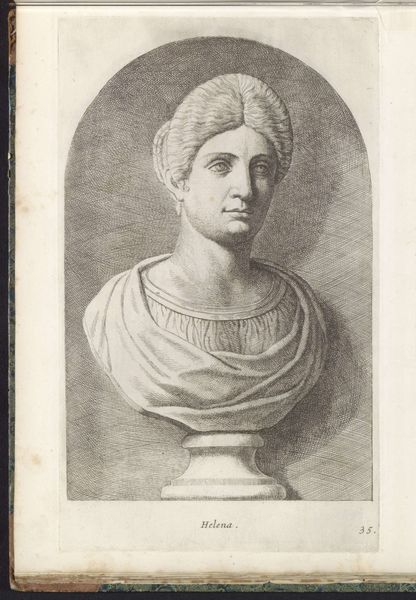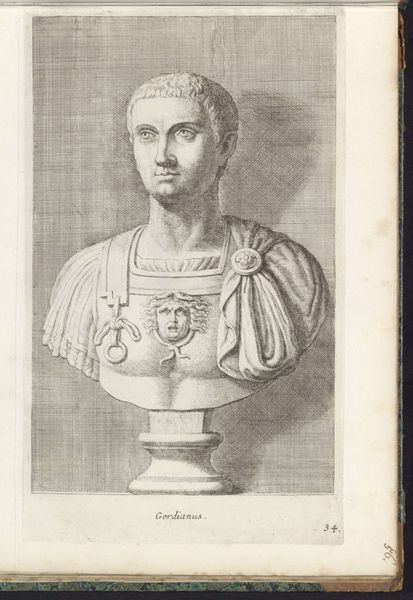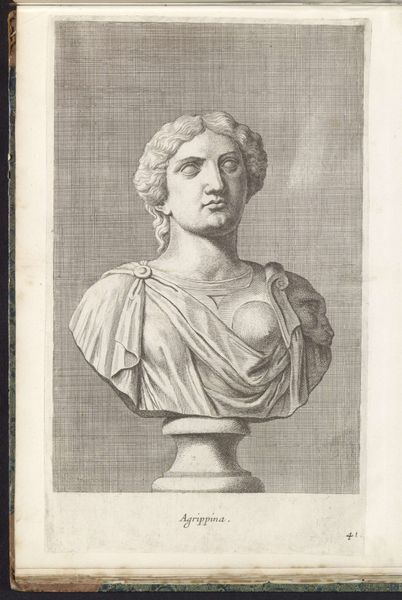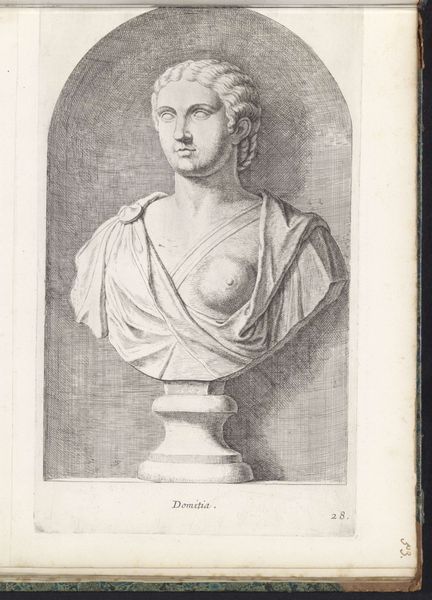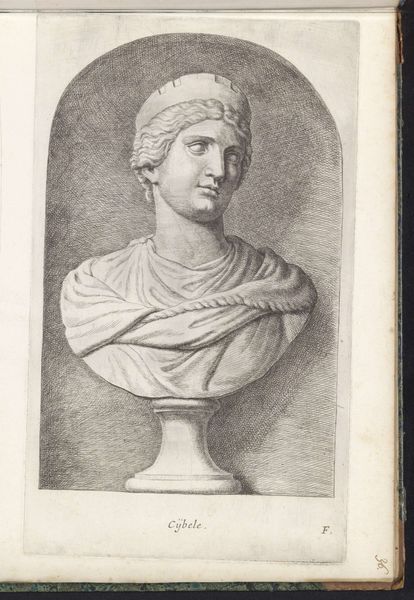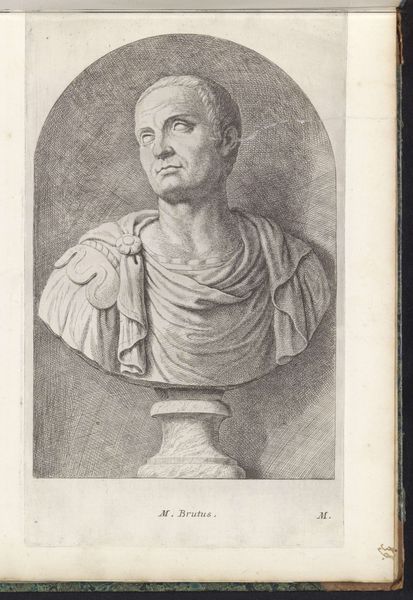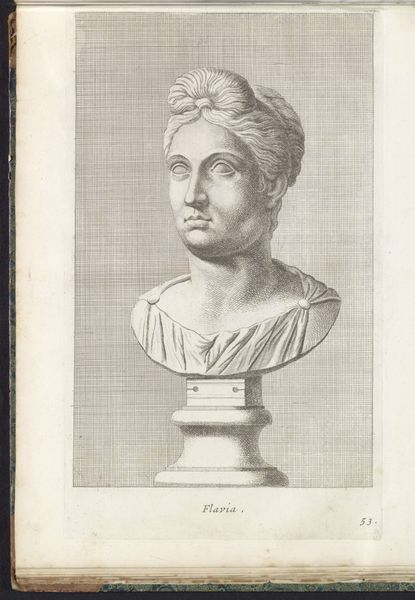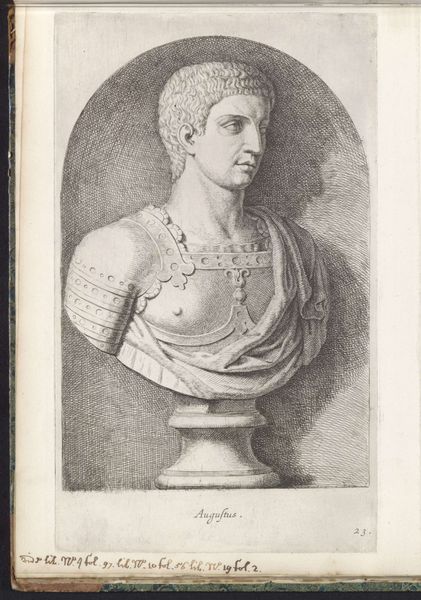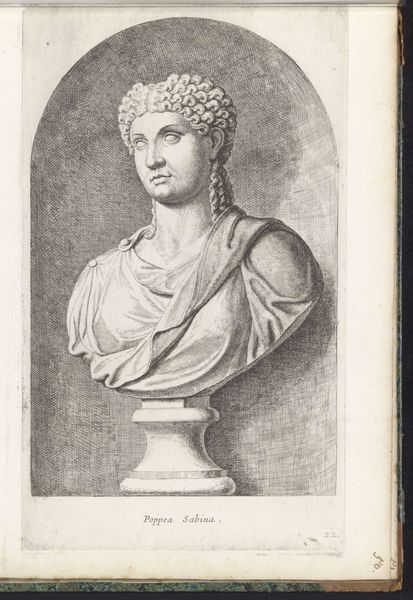
print, engraving
#
portrait
#
baroque
# print
#
pencil drawing
#
portrait drawing
#
history-painting
#
engraving
Dimensions: height 325 mm, width 196 mm
Copyright: Rijks Museum: Open Domain
Editor: Here we have Hubert Quellinus' "Buste van Minerva," dating from around 1646 to 1670. It's an engraving, so a print, depicting a bust of Minerva, or Pallas Athena. I find her expression so stern and resolute. What do you see in this piece? Curator: What I find compelling is how this seemingly straightforward portrait of Minerva actually embodies complex power dynamics of the 17th century. Quellinus created this print during a period of significant socio-political upheaval, the Dutch Golden Age. Think about how Minerva, as the goddess of wisdom and strategic warfare, was often invoked to legitimize and embody leadership. Editor: So you are saying this print does more than just show a goddess; it makes a statement? Curator: Exactly. Consider how Minerva is portrayed—almost masculine, in a suit of armor. This departs from more sensual depictions. What impact might this masculine representation have had? Was Quellinus perhaps subtly commenting on ideas about who should wield power? I encourage looking into the social perception of powerful women during this time. Editor: That's fascinating. I hadn’t considered that her gender presentation itself could be part of the artwork's message. The context really shifts how you see it. Curator: And what this tells us about both the goddess and the period when the piece was made. Images can reinforce or challenge expectations depending on social norms. What has this consideration unveiled for you about our own era? Editor: That’s powerful! Looking closely at how art engages with identity makes you think about how we still grapple with these themes today. Thanks!
Comments
No comments
Be the first to comment and join the conversation on the ultimate creative platform.
